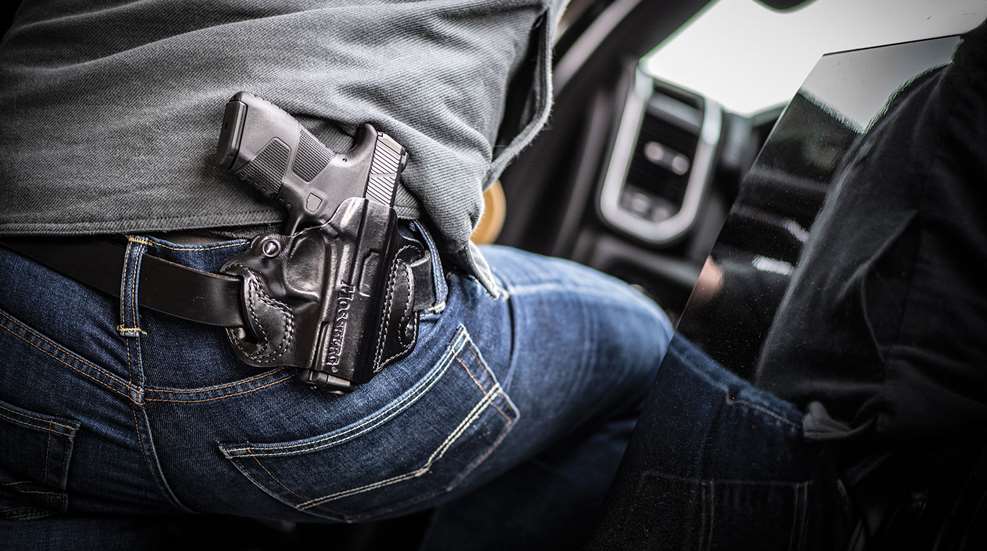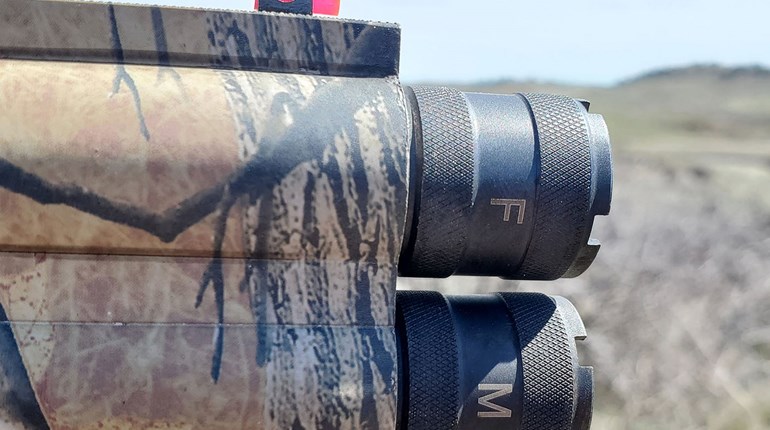
Buying a holster for your handgun is a lot like buying a pair of shoes: No one else can pick them out for you, because if they don’t fit just right, they’ll be useless. Unfortunately, unlike shoes, we seldom have the opportunity to try a holster on before we buy it.
For that reason, just about all of us who have carried concealed for a long time have a pile of rejected holsters in a closet somewhere, gathering dust. It takes a while and some trial and error to find the holster that really suits you and your handgun, so don’t be discouraged if you don’t get it right on the first try. When you’re trying out a new holster, there are four factors you absolutely must consider. And for the purposes of this article, we’re talking about traditional waistband holsters, not specialty holsters worn on your boot or your bra, or other concealed-carry solutions like belly bands, tactical leggings or wrap-style corsets.
1. Safety
A good holster absolutely must keep the gun secure while you move, which we call retention, and it absolutely must cover the trigger guard with a material rigid enough that the trigger cannot be accidentally pulled or snagged. If the holster you’re considering fails either of those tests, it’s an automatic no. Next.
For safety and retention, I use only holsters that are molded to my specific gun, made of Kydex. You can try leather (more on that in a minute), but avoid nylon, anything that’s got a one-size-fits-most loose pocket, and anything that’s soft or thin enough that the trigger could still be manipulated through the material.
2. Concealability
Aside from safety, part of a concealed-carry holster’s job is to help you hide the gun and to protect your body from the gun’s hard lines and edges. Unless you plan to wear a jacket or vest at all times, this means you’ll want an IWB (inside-the-waistband) holster. These make concealment easier because at least part of the gun will be hidden under your pants or skirt. The rest of the gun—at least the grip—will stick out above your belt and be covered by your shirt, but the angle makes a huge difference here in how well you can hide that grip. A holster that has adjustable cant will help, as it lets you tilt the grip a little farther forward to whatever angle offers you the best balance of concealability and access.
You can also experiment with where on your belt you wear the gun, as that can help with concealment, too. The 4 o’clock position is preferred by many people, but with my particular gun and holster combo (and my body shape), I find I can hide it better at 3 o’clock. In that spot, the grip is poking my shirt at the 4 o’clock position and is naturally hidden by my curves and normal body movement.
3. Comfort
I’ll be honest: I’ve never carried my gun concealed and forgotten I’m wearing it because it’s just so comfortable. Maybe that happens to some people, but not to me. That said, I’ve tried many downright uncomfortable holsters over the years, and I’m here to tell you: If it’s not at least tolerably comfortable, you won’t use it. It does take some time to get used to wearing a gun, but you should at least start from a place of “this isn’t too bad” and not “Gosh, this is digging into my belly, scraping my skin and smashing my hipbone.”
Some holsters ride higher or lower than others. This helps with concealment as well as comfort, but it can also affect the speed of your draw, so keep that in mind. A holster with adjustable ride height may make sense for you.
For concealment and comfort, I like a minimalist holster—I’m currently using the DeSantis Slim Tuk. Some holsters have considerably more material to them, which some people like, but I find the wider the holster, the more trouble I have getting it to play nice with my curves.
Speaking of curves, some women like leather holsters because leather eventually molds a bit to your shape, which hard Kydex does not. I do not own any leather holsters; I prefer the firm, definitive retention “click” of a Kydex holster. If you try leather, make sure it is stiff enough that the holster doesn’t collapse when you draw your gun, and make sure it is well-molded to your gun.
Remember, a holster that’s comfortable when you’re standing in the store isn’t necessarily good enough—it also must be comfortable when you’re sitting on the couch or at your office desk, while you’re bending over to tie your shoes, and when you’re driving.
4. Convenience
Convenience is the last factor, because honestly, if you can find a comfortable, safe holster that lets you conceal the gun well, that’s all you need, and you might be satisfied. Convenience is more of a want—but it does help!
What I primarily mean by convenience is how easy is the holster to put on and take off every day? I like a firm belt clip on the holster for this purpose—just barely flexible enough that I can pry it open and pull the holster (with the gun still in it) off my belt at the end of the day, then clip it back on the same way the next morning. Paddle-style holsters can be good for convenience, too.
What I definitely don’t want—learned the hard way—is a holster with fixed loops that I have to thread my belt through. It’s just too much of a pain to thread the belt through the perfect number of belt loops, thread it through the holster at just the right spot so it doesn’t interfere with a loop, and then finish threading it. If I’m wearing a spare mag holster on my weak side, it’s worse—like doing a puzzle trying to get all the pieces in the right place. Admittedly, wearing a belt is more uncomfortable than wearing a gun for me, so I might be biased in this preference.
Remember, it might take you several tries to find the right holster that really works with your gun, your body, your life and your wardrobe. It absolutely must be safe and easily concealed, and if it’s not comfortable on top of that, you won’t wear it. And if you can find one that’s convenient—easy to put on and take off every day—you’ve found your unicorn. There’s one out there that will work for you, so don’t get discouraged if you don’t hit the jackpot on the first try!














































